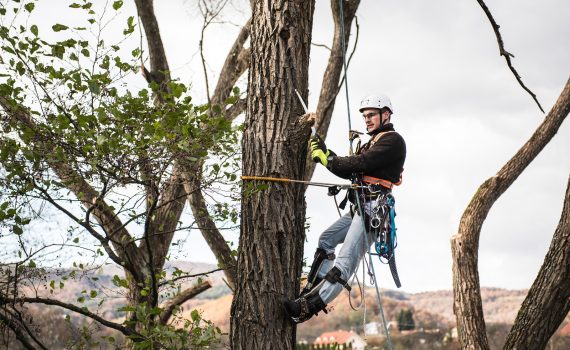While the perfect landscape can last for years, there may be times where you need to make changes. You may need to extend or remodel your home, move to a new house, or deal with an overgrown tree or shrub. But this doesn’t always have to mean tree removal or leaving your favorite tree and shrubs behind. Moving or transplanting a tree allows you to keep your beloved trees by moving them to a more suitable location. While this gives you more options when deciding what to do with an out of place tree, it’s not always easy to move a tree. Here we look at how to evaluate when you can move a tree, and how moving a tree can help you maintain the garden you want.
Plan Your Tree Transplant
A tree transplant can’t be done in a hurry, and adequate planning and preparation needs to go into your tree transplant process. You need to ensure you have sufficient time and budget to put in to moving a tree properly so that it survives the transplant process. Times of year when the ground is dormant and the temperature not too hot or cold, such as spring or fall, are ideal for moving trees.
You need to ensure you take into account time to prune tree roots in the season before you plan to move the tree. You also need to have ability to remove what could be a large tree along with the root ball to a new location. Keep in mind that for every inch of tree trunk diameter you should include 10-12 inches of root ball attached. This can mean that for a more mature tree, you will need a large truck or piece of machinery to move it. If this is the case, it can be helpful to call on your local arborist for professional assistance in moving your tree.
Think About Location
Moving a tree successfully is all about finding an appropriate location to move it to. It’s important to consider the species and characteristics of your tree, because different tree types require different conditions to flourish. It’s important to evaluate sunlight levels and the soil type and drainage. It can also be helpful to inspect the final tree destination to ensure its also free of pests and diseases. Because transplanting a tree is difficult, you don’t want to do it often. Ensure that your new location is suitable and provides plenty of room for your tree to grow and flourish.
Transplant With Care
The transplanting process should be done with great care, and by a professional arborist if possible. Tree roots need to be adequately watered beforehand to soften the soil and ensure the soil also sticks to the roots. During tree transport, the tree should be adequately supported, with the root ball kept moist. If the tree needs to be transported uncovered or left for some time before replanting, the roots should be kept moist with wet burlap or fabric and kept in the shade. Soil at the new location should also be kept soft and moist to aid planting and prevent damage to the root ball.
Be Prepared To Look After Your Tree
Transplanting a tree can be a source of stress and shock from which it can take the tree sometime to recover. It’s important you leave time to water and care for the tree appropriately for at least 1-2 years after transplanting, depending on the size of the tree.
When it’s time to give your favored trees a new home, transplanting a tree is the ideal way to move them. Keep them healthy and safe with adequate preparation and after-care, and work with a professional arborist to move large, bulky and difficult trees.
 Bringing Sexy Back Into Your Yards
Bringing Sexy Back Into Your Yards 
